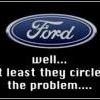1. PMPO - stands for Peak Music Power Output, amount of power a speaker/sub can take for around 0.5 seconds, manufacturers put it to make their products sound good.
2. RMS - Root Means Squared, the amount of power a speaker can take all day long every day. Best to go for a speaker with a higher RMS if you like your music loud all the time.
3. Impedance - This means the total resistance in the flow of the electrical circuit in the speaker/amp. measured in Ohms. for instance a speaker with a low impedance is much harder for an amp to drive it.
4. Sensitivity - this means that the speaker will deliver 'this much sound' with a certain amount of power given by the amplifier in the head unit etc. sneisitivity is measured in decibels.
5. Pre-Outs - These are amplifier Pre-Outputs that give additional amplifiers a good quality audio signal to use to boost up to the powered speakers. A good pre out level is usually around 4-6 volts. Any lower and the signal can become quite fuzzy.
6. 8,16 and 24 bit conv - this is the conversion rate of the CD players electronics, usually marked DAC (digital-to-analogue-converter). The faster and larger conversion rate, the higher quality the sound. 24bit units can start just over 500 quid.
7. subwoofer blending - this is the term for when the subwoofer and other speakers are properly matched to get the optimum sound of the system. If they are not blended properly it can end up sounding pap.
8. Class A and B amplifiers - there are two major differences between these two types of amplifier. class A amplifiers run the positive and negative signals at the same time, this causes the amplifier to be quite hot (most need fans) as the transistors are permanently used, class A amps are a much better sounding amp. Class B use a diferent circuit to concentrate on the negative signals. This means that some sound quality is lost due to a. extra circuit, b. signal strength lost.
9. Colouration - This is when the bass starts to boom or the treble starts to sound really really tinny. Its not something good.
10. Crossovers - This is a little device which switches the sound between high and lows, then to the right speaker. eg, 13 cm sub (low and mid) and tweeter (high).
11. Bridging this is when you make a 2ch/4ch amp into a mono amp by taking the two/four outputs that are there and turning them into one much more powerful output, basically this is used to allow more power to run the desired sub. it involves hooking up one side of the positive and using the other side of the negative, its very simple and can easily be worked out just by looking at the side of the terminals as theyre almost always marked
errrrrr thats about all i can think of at the moment, i may add some more later.
james
Edited by Madmax, 05 July 2005 - 10:03 PM.
















